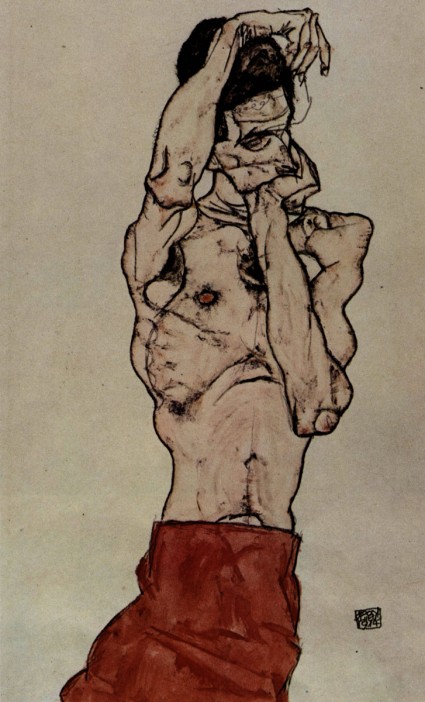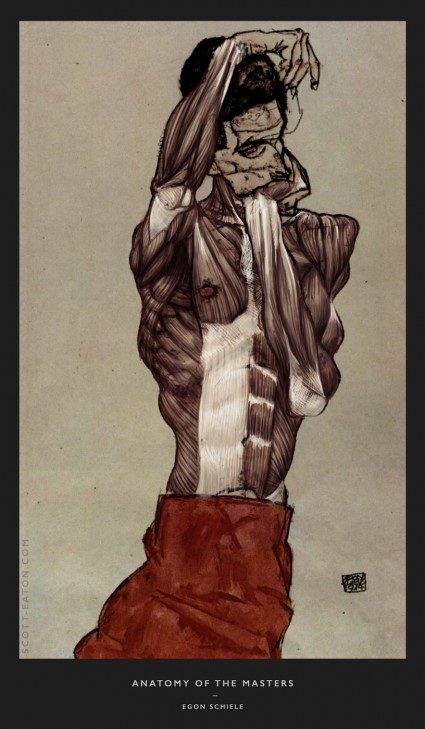Here is an écorché study of a drawing from the spectacular and controversial Viennese artist Egon Schiele. Schiele, long one of my favorites, is known for his hugely expressive figurative work – dynamic, contorted, deformed figures. Despite the effortless fluidity of his lines, the anatomy teacher in me can’t help but appreciate the underlying structure and coherence of his figure. My écorché study imposes plausible anatomical construction atop his piece and reveals that, despite his apparent looseness of his style, there is a deep understanding of anatomy at work. I can see this in all his drawings and paintings; every distorted, stylized figure actually fits together like an well-designed anatomical puzzle.
 The interesting part of Schiele’s back story is that he originally attended the Academy of Fine Arts, Vienna, where he trained for three years in the technically rigorous, but staid, style of the French-Italian academic system. In additional to instruction in the techniques of drawing and painting, he received in-depth anatomy classes and was required to made laborious figures studies known as “académies”. He hated academic training and left the Academy before completion (and subsequently befriend and received mentorship from another of my favorite artists, Gustav Klimt). Despite his early departure from the academy and subsequent rejection of its lessons, his rigorous training still noticeably influences every contour of his work.
The interesting part of Schiele’s back story is that he originally attended the Academy of Fine Arts, Vienna, where he trained for three years in the technically rigorous, but staid, style of the French-Italian academic system. In additional to instruction in the techniques of drawing and painting, he received in-depth anatomy classes and was required to made laborious figures studies known as “académies”. He hated academic training and left the Academy before completion (and subsequently befriend and received mentorship from another of my favorite artists, Gustav Klimt). Despite his early departure from the academy and subsequent rejection of its lessons, his rigorous training still noticeably influences every contour of his work.
Having also studied in the stultifying environment of academic art (myself at the Florence Academy of Art, where I also left early), I can testify to how tedious and barren the prospect of figure study after figure study is. It really is a glorified form of copying. This being said, there is value in a manner of training that forces an artist to simply internalize the forms of the figure without concern for composition or content. Much like piano scales to a pianist, study and deliberate practice in drawing frees one from having to make a conscious effort when “creating”. An artist who becomes fluent in the language of the figure – contours, planes, volumes, anatomy – can improvise in their work. Many of the greatest artistic innovators of the 20th century – Schiele, Klimt, Picasso, Rodin, and others – came from this lineage of academic study. They sat through countless tedious drawing and copying sessions, but in the end they remixed these lessons into their own unique stylistic language. While I stop short of prescribing academic training for developing figurative artists, there are important lessons that can be distilled from it…

